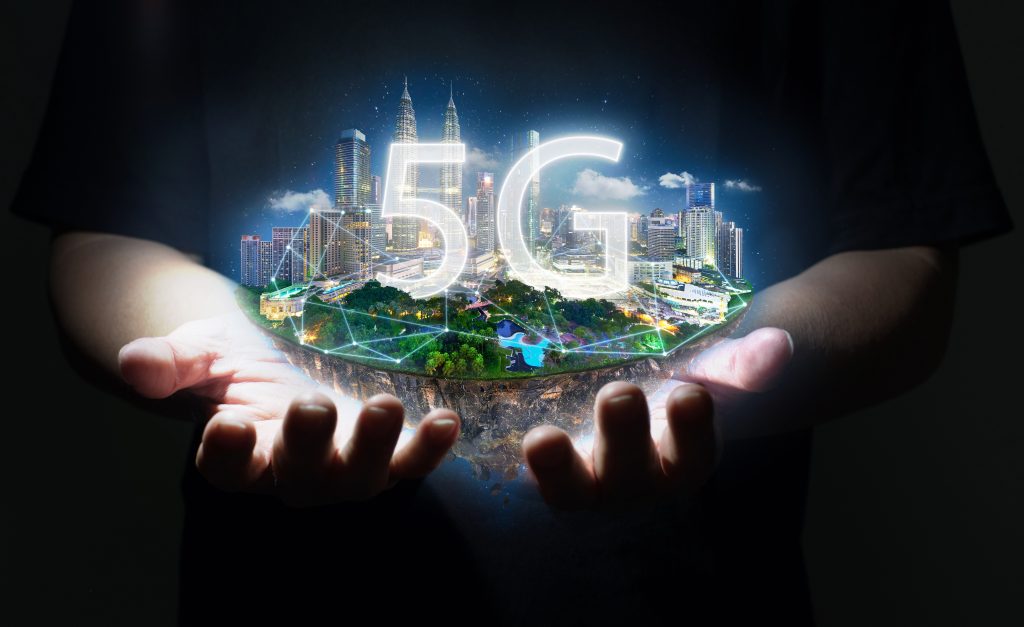As we embrace the new era of wireless technology, it is crucial to acknowledge the environmental impact that accompanies it. The implementation of 5G is projected to escalate global energy consumption, leading to a surge in greenhouse gas emissions. Moreover, the production and disposal of new devices and small cells for 5G contribute to waste and environmental degradation. Additionally, the utilization of millimeter waves in 5G networks has the potential to disrupt ecosystems, impacting bird reproduction, bee populations, and the delicate balance of nature. As we strive for faster and more efficient communication, it is imperative that we adopt a proactive approach to comprehend and mitigate the negative environmental consequences of 5G technology. By doing so, we can secure a sustainable future for both technology and the environment.
Increased Energy Consumption
Increased energy consumption is a significant concern when it comes to the implementation of 5G technology. As 5G networks are rolled out, the demand for data and connectivity will skyrocket, leading to a surge in energy usage. However, there are ways to mitigate this increased energy consumption and ensure a more sustainable approach to 5G implementation.
One crucial aspect is energy efficiency. By focusing on developing and utilizing energy-efficient technologies, such as low-power chips and optimized network infrastructure, we can minimize the energy consumed by 5G networks. Additionally, incorporating renewable energy sources into the power supply for 5G infrastructure can further reduce the environmental impact.
Environmental regulations and sustainable practices also play a vital role in managing the energy consumption of 5G technology. By implementing strict regulations and guidelines, we can ensure that energy conservation measures are followed throughout the deployment and operation of 5G networks. This includes practices such as optimizing network equipment, reducing standby power consumption, and implementing energy-saving features in devices.
Impact on Climate Change
The implementation of 5G technology has significant implications for climate change, as it contributes to the already substantial greenhouse gas emissions of the information and communication technology (ICT) industry. The ICT industry is responsible for approximately 2% of global greenhouse gas emissions. As 5G technology is adopted on a larger scale, it is expected to increase energy consumption, leading to a corresponding increase in greenhouse gas emissions. To mitigate the environmental impact of 5G, reduction strategies and sustainability measures should be implemented.
Renewable energy sources can play a crucial role in reducing the carbon footprint of 5G technology. By powering the infrastructure and devices with renewable energy, the reliance on fossil fuels can be minimized, thereby reducing greenhouse gas emissions. Additionally, policy implications and environmental regulations can be put in place to ensure that the deployment and operation of 5G networks adhere to sustainable practices.
Furthermore, the life cycle assessment of devices and infrastructure should be considered to identify areas where environmental impact can be minimized. This includes examining the manufacturing process, the materials used, and the end-of-life disposal of devices. By implementing sustainable practices throughout the life cycle, the environmental impact of 5G technology can be reduced.
Carbon Emissions and Temperature Increase
As the implementation of 5G technology continues to expand, it is crucial to address the impact it has on carbon emissions and the subsequent temperature increase. The adoption of 5G technology is expected to lead to increased energy usage globally. The energy demand of 5G itself is high, resulting in a spike in energy consumption. Furthermore, the ability to connect more devices to the network creates a greater incentive for consumers to purchase and use electronics more frequently, further increasing energy consumption. This increased energy usage has a direct impact on carbon emissions and contributes to climate change.
The ICT industry already accounts for approximately 2% of global greenhouse gas emissions, and the transition to 5G is expected to further increase these emissions. To keep the global temperature increase below 2°C, a reduction in carbon emissions of 15-30% is necessary by 2020. However, the consumption of devices and the manufacturing process for 5G technology contribute to increased carbon emissions. The production of new devices and small cells for 5G requires nonrenewable metals, and the manufacturing process often generates significant waste.
Additionally, mobile devices themselves have a substantial environmental impact. A single device can produce around 45kg of carbon dioxide emissions over three years, which is equivalent to driving the average European car for 300km. With the increased capacity for more devices in the 5G network, the carbon footprint of smart devices is expected to significantly increase.
Consumption Increases and Manufacturing
To understand the environmental impact of 5G technology, it is crucial to examine the effects of increased consumption and manufacturing. The transition to 5G will lead to a surge in the production and use of new devices, resulting in increased waste generation and nonrenewable metal consumption. This will have significant implications for the environment, particularly in terms of the device carbon footprint and the generation of technology waste.
Increased consumption of devices will inevitably lead to more waste and environmental impact. The production of new devices and small cells for 5G requires the extraction and use of nonrenewable metals, which further depletes natural resources. Moreover, metals used in manufacturing smart devices often cannot be easily recycled, resulting in tons of waste that ends up in landfills.
The environmental impact of mobile devices is substantial. A single device can produce around 45kg of carbon dioxide emissions over three years, equivalent to driving the average European car for 300km. With the capacity of 5G to support more devices, the carbon footprint of smart devices is expected to increase significantly.
The manufacturing and maintenance of small cells, which are essential for 5G implementation, also contribute to waste generation. Implementing small cells in high densities in cities will result in a drastic increase in technology waste. The short lifespan of devices further adds to the predictable and inevitable waste generation.
To mitigate these environmental impacts, it is important for companies, governments, and consumers to be proactive in understanding and addressing the consequences of increased consumption and manufacturing in the 5G era. Environmental impact assessments should be conducted to estimate the overall impact of 5G on the environment. Additionally, life cycle assessments of devices can inform strategies to combat the negative environmental effects. By taking these measures, effective steps can be taken to minimize the environmental impact of 5G technology.
| Environmental Impact | Description |
|---|---|
| Increased waste generation | The transition to 5G will lead to increased consumption of devices, resulting in more waste generation. |
| Nonrenewable metals | The production of new devices and small cells for 5G requires the use of nonrenewable metals, depleting natural resources. |
| Device carbon footprint | Mobile devices have a significant carbon footprint, and the capacity of 5G to support more devices will increase this footprint. |
| Technology waste | The manufacturing and maintenance of small cells for 5G result in technology waste generation. |
| Environmental impact assessments | Conducting assessments to estimate the overall impact of 5G on the environment is crucial for minimizing environmental consequences. |
Environmental Impact of Mobile Devices
Mobile devices have a significant environmental impact, particularly in terms of carbon dioxide emissions and waste generation. As the demand for mobile devices increases, so does the need for sustainable practices to mitigate their negative effects on the environment. One way to address this issue is by implementing strategies to reduce waste. Proper disposal and recycling of mobile devices can minimize the amount of electronic waste that ends up in landfills. Additionally, adopting sustainable manufacturing practices and using environmentally-friendly materials can help minimize the environmental impact of mobile device production.
Environmental assessments can also play a crucial role in identifying potential areas of improvement. These assessments can evaluate the lifecycle of mobile devices, from production to disposal, and identify ways to minimize emissions and waste throughout the process. By implementing eco-friendly practices, such as using renewable energy sources for manufacturing and reducing packaging materials, the environmental impact of mobile devices can be significantly reduced.
Furthermore, protecting ecosystems is essential in mitigating the environmental impact of mobile devices. By avoiding the use of harmful materials and reducing energy consumption, the negative effects on wildlife and their habitats can be minimized. Additionally, minimizing emissions from mobile devices can help preserve air quality and prevent further damage to the environment.
Environmental Impact of Small Cells
Small cells, a vital component of 5G technology, have a significant environmental impact that must be considered to mitigate potential negative effects on the ecosystem. Here are some key points regarding the environmental impact of small cells:
- Small Cell Waste Management: The manufacturing and maintenance of small cells generate a considerable amount of waste. Implementing small cells in high densities in cities will result in a drastic increase in technology waste. Proper waste management strategies are needed to handle the disposal and recycling of small cell components.
- Health Effects of Small Cells: The health effects of small cells are a concern for many. However, extensive research has found no conclusive evidence linking small cell radiation to adverse health effects. Regulatory bodies impose strict guidelines and safety limits to ensure that small cells operate within safe radiation levels.
- Regulatory Policies for Small Cells: Regulatory policies play a crucial role in managing the environmental impact of small cells. Governments and regulatory bodies enforce guidelines for small cell deployment, radiation emissions, and waste management. These policies aim to protect the environment and ensure the safe implementation of 5G technology.
- Alternative Solutions to Small Cells: While small cells are essential for improving network coverage and capacity, alternative solutions can also be explored. For example, the use of existing infrastructure like utility poles and buildings can reduce the need for additional small cell installations, minimizing the environmental impact.
- Economic Impact of Small Cells: Small cells have a positive economic impact by enabling faster and more reliable network connections. The deployment of small cells creates job opportunities in the telecommunications industry and supports the growth of IoT devices and smart cities. The economic benefits of small cells need to be balanced with their environmental impact to achieve sustainable development.
Harm to Ecosystems
The harmful effects of 5G radiation on ecosystems are a growing concern that must be addressed to protect biodiversity and the delicate balance of nature. The deployment of 5G technology has the potential to harm wildlife and disrupt ecosystems, leading to significant biodiversity impacts and ecological consequences. Research has shown that the radiation from 5G networks can have detrimental effects on bird populations, including disfigured eggs and negative impacts on breeding and nesting behaviors. Bees, which play a crucial role in pollination and ecosystem health, have also been shown to be more affected by radiation from the 5G spectrum, potentially leading to changes in their behavior and functions. These disruptions to bird and bee populations can have far-reaching consequences for environmental conservation efforts. It is essential to take a proactive approach to understand and mitigate the potential harm to wildlife and ecosystems caused by 5G radiation. Environmental impact assessments should be conducted to estimate the risks and develop effective measures to protect biodiversity and ensure the long-term sustainability of our ecosystems.
Importance of a Proactive Approach
To effectively address the potential harm caused by 5G radiation on ecosystems, it is imperative to take a proactive approach in understanding and mitigating the risks to wildlife and the delicate balance of nature. By implementing proactive measures and conducting thorough environmental assessments, we can ensure a sustainable future while combating the negative impacts of 5G on the environment. Here are five key reasons why a proactive approach is vital:
- Awareness and Understanding: A proactive approach involves raising awareness about the potential environmental impacts of 5G radiation. This includes educating the public, policymakers, and industry stakeholders about the risks and potential mitigation strategies.
- Environmental Assessment: Conducting comprehensive environmental assessments is crucial to identifying and evaluating the potential harm caused by 5G radiation on ecosystems. These assessments enable us to develop targeted strategies to minimize negative impacts.
- Sustainable Future: By taking a proactive approach, we can ensure that the rapid deployment of 5G technology aligns with our long-term sustainability goals. This includes considering the energy consumption, waste generation, and carbon emissions associated with 5G infrastructure and devices.
- Implementing Effective Measures: Proactive measures enable us to develop and implement effective strategies to mitigate the environmental impacts of 5G. This may involve the development of guidelines and regulations, the promotion of energy-efficient technologies, and the adoption of best practices.
- Collaboration and Stakeholder Engagement: A proactive approach requires collaboration and engagement with all relevant stakeholders, including mobile companies, policymakers, environmental organizations, and the public. This collective effort ensures that the necessary measures are implemented to minimize the environmental risks associated with 5G.



